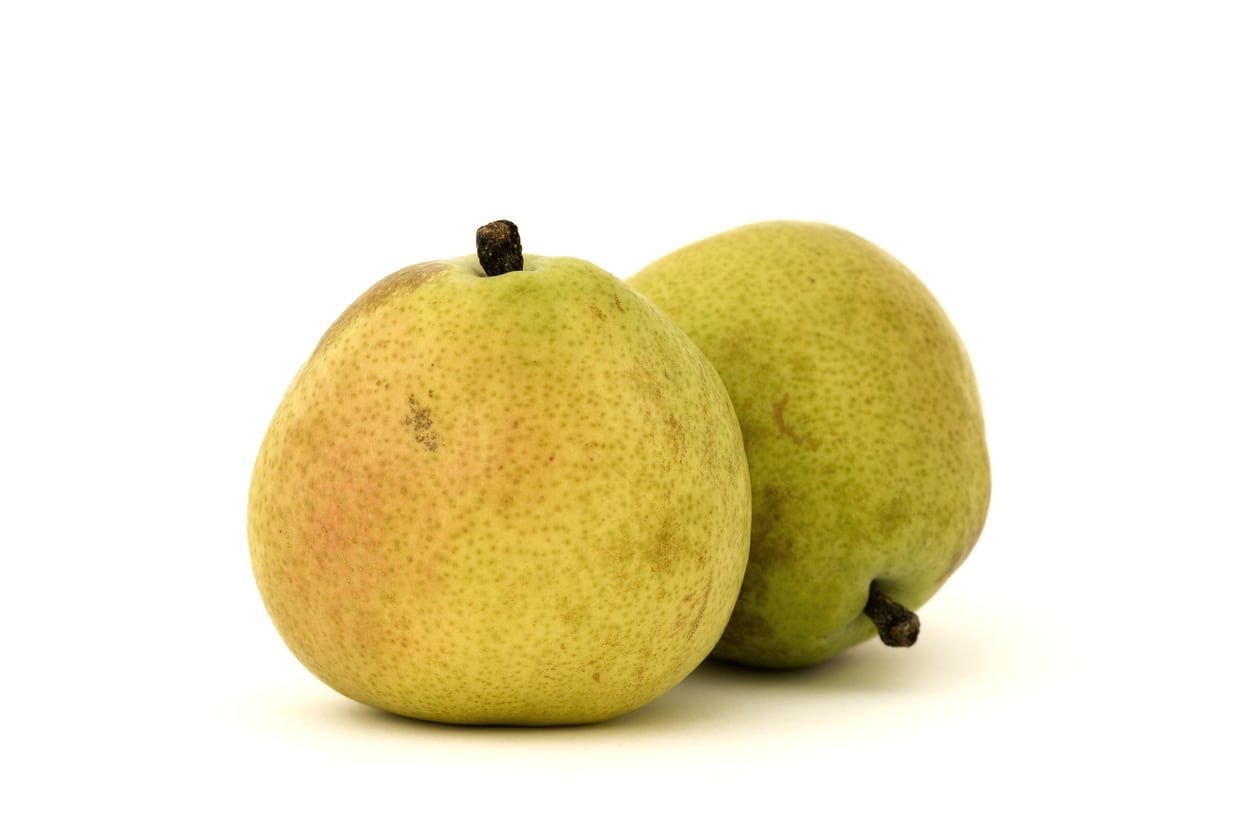
If you’re like me, you can hardly wait for the first winter pears to appear at the market and one of my favorites is the D’Anjou. Interested in growing your own D’Anjou pear trees? The following D’Anjou pear information discusses the care for and harvesting of D’Anjou pears.
D’Anjou Pear Information
Shopping for pears and you are likely to see the usual suspects, Bartlett, Bosc, and D’Anjou. Still one of the best pears on the market, D’Anjou was introduced in 1842. D’Anjou pear trees are semi-dwarf trees that grow up to around 18 feet (5.5 m.) in height, which makes them easy to harvest. They are not only cold hardy (USDA zones 5-8) but also drought tolerant. Simply called Anjou, or D’Anjou, the full name for these luscious pears is Beurre d’Anjou from the French ‘beurre,’ meaning butter – in reference to the fruit’s rich, buttery taste. They are thought to have originated in Belgium and are named after the Anjou region of France. The tree is not only a prodigious producer, but is also highly ornamental. It blooms in the spring with aromatic creamy white flowers that attract pollinators followed by the large, green fruit. D’Anjou pears are extremely juicy and ideal for canning, baking, fresh eating, and of course, juicing.
Growing D’Anjou Pears
D’Anjou pears require a pollinator in order to set fruit such as Bartlett, Bosc, Seckel or Delicious. These pear trees can be grown in a mini orchard grouping or in large containers. Plan to plant D’Anjou pear trees in the spring when the tree is still dormant. Select a site that is in full sun, at least 6 hours per day, with well-draining soil with a pH of 6.0-7.0.
Harvesting D’Anjou Pears
D’Anjou pears begin to fruit when they are 4-8 years old. The fruit is harvested in late September when they are a brilliant green in color and still very firm. While you could eat them at this time, the key to the sweetest, juiciest pears is to place them in storage at room temperature to allow them to sweeten and continue to ripen. As they ripen, the flesh begins to flush yellow and the fruit becomes even more aromatic. This pear has an incredibly long storage life, up to 7 months, which is why it is often given or featured prominently on menus and at the grocers during the winter months.
Care for a D’Anjou Pear
After the first year, prune the pear tree. Remove any suckers, dead or damaged branches, and those that cross over each other. Also, prune out any downward growing branches and trim the main central (leader) branches in the middle of the tree to limit the height and encourage side branching. Thereafter, water the tree with an inch (2.5 cm.) of water per week when it is dry and fertilize annually with a standard or low nitrogen fertilizer.
Sign up for the Gardening Know How newsletter today and receive a free copy of our e-book "How to Grow Delicious Tomatoes".

Amy Grant has been gardening for 30 years and writing for 15. A professional chef and caterer, Amy's area of expertise is culinary gardening.
